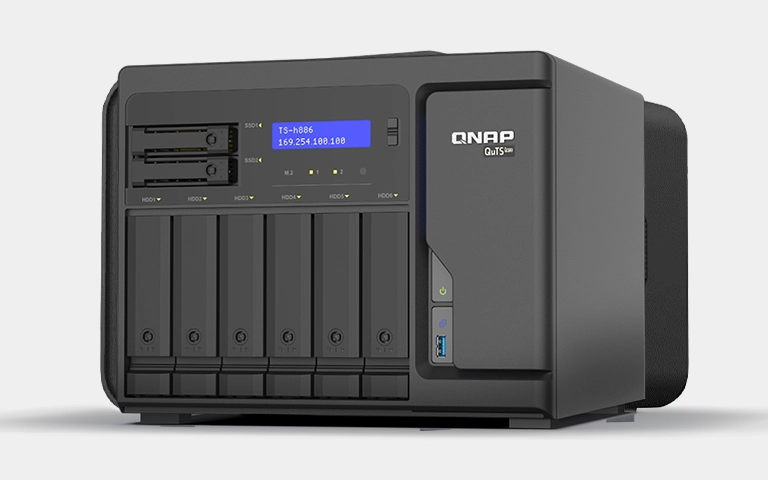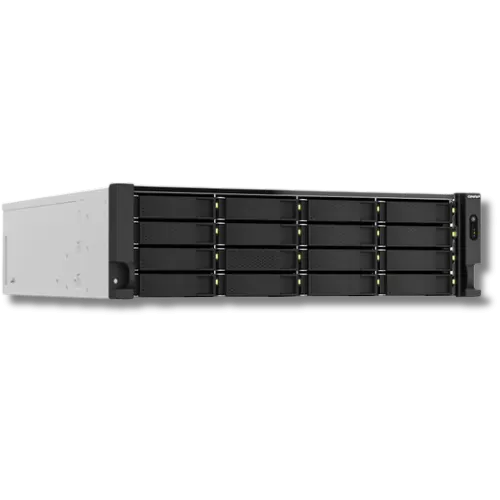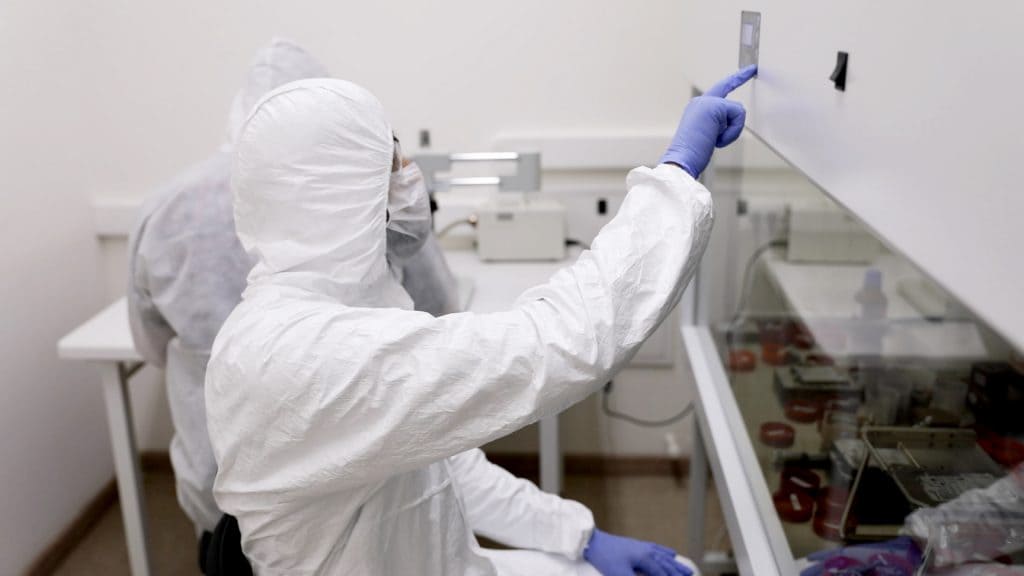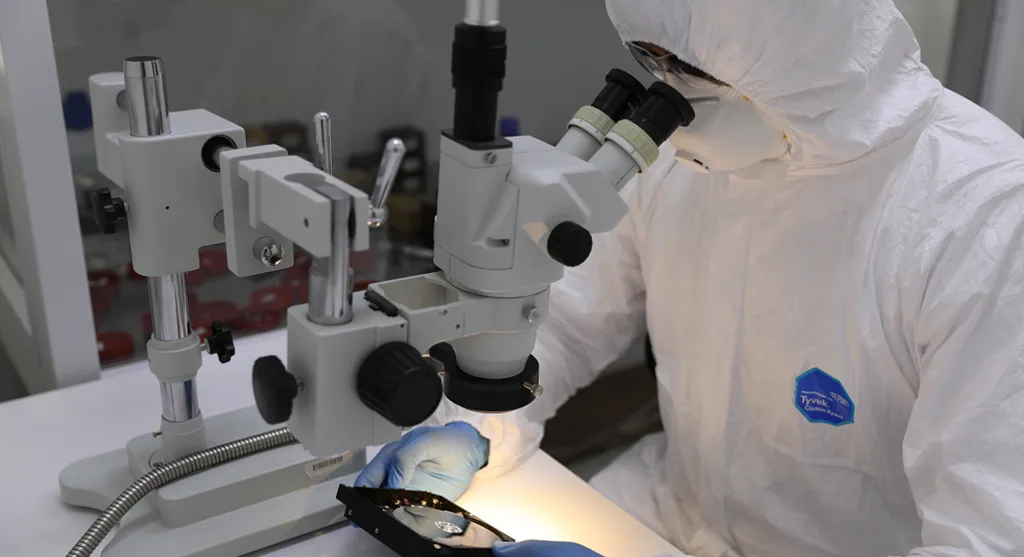A marketing agency in New York reached out to us after their QNAP QuTS Hero NAS failed without warning. The system contained active client data essential for ongoing projects, and the sudden loss of access created an immediate disruption in daily operations.
The agency’s internal team noticed that the NAS would no longer respond through the network interface, and none of the shared folders were accessible.
Since these files were crucial for project deadlines and customer communications, restoring access quickly became a top priority.

Client Situation: RAID 10 Array Inaccessible
The QNAP QuTS Hero NAS was configured with a ZFS RAID 10 array, designed to balance performance and redundancy for high-demand workloads.
Despite this setup, the system suddenly became unresponsive, preventing users from accessing stored data through either the network or local interface.
The team attempted basic troubleshooting, including restarts and port checks, but the drives remained unreadable. The loss of access to critical project files placed ongoing marketing campaigns at risk, forcing the agency to halt several operations until the data could be recovered.
Initial Troubleshooting and Realization of Risk
Before contacting our team, the agency’s IT staff tried several recovery methods to restore access to their QNAP QuTS Hero NAS:
System Reboot and Drive Reseating: The team restarted the NAS multiple times and reinserted the drives, hoping to reestablish the RAID configuration.
Firmware Check: They verified the latest QNAP firmware and attempted an update, but the NAS remained inaccessible.
Manual RAID Assembly Attempts: The IT staff tried to import the ZFS RAID 10 array manually through the system console, but the pool could not be mounted successfully.
Use of Third-Party Utilities: Several utilities were tested to detect the drives individually, but no valid file structure was found.
After multiple failed attempts, the agency realized that further DIY recovery could permanently damage their ZFS metadata or overwrite valid parity data. They reviewed our article on RAID rebuild data loss risks and decided to proceed with professional assistance.

Our QNAP QuTS Hero NAS Recovery Process
Once the NAS arrived at our lab, our engineers followed a controlled recovery procedure to ensure all data was safely restored:
Each of the RAID 10 drives was tested individually to identify any physical or logical faults before starting the recovery.
Using specialized write-protected equipment, we created full sector-by-sector images of all drives to preserve the original data structure.
The ZFS RAID 10 array was rebuilt virtually by analyzing parity patterns, stripe size, and drive order, ensuring an accurate configuration.
Engineers repaired corrupted ZFS metadata and verified directory paths, restoring access to all project files and folders.
The recovered data was validated in a secure environment. A remote file verification session allowed the client to confirm completeness before final delivery.
This process followed the same standards outlined in our RAID troubleshooting guide, ensuring precision and reliability at every step.

Successful Recovery and Data Restoration
After rebuilding the ZFS RAID 10 array, our engineers successfully restored all project data stored on the QNAP QuTS Hero NAS. The recovered files included marketing materials, client assets, and campaign archives that were essential for ongoing operations.
During the remote verification session, the agency confirmed that every folder and file was accessible and intact.
Once validated, the recovered data was transferred to a new, fully functional NAS system, allowing the client to resume operations without data loss or delay.
Fast turnaround times for business-critical data
Key Insights for QNAP NAS Users
This case highlights how even robust NAS systems like QNAP QuTS Hero can fail unexpectedly due to hardware issues, power interruptions, or file system corruption. Regular monitoring and preventive maintenance are essential to minimize risks.
To maintain data reliability, QNAP users should:
Schedule automated backups to a separate device or cloud service
Check drive health regularly using QNAP’s system utility
Avoid forced rebuilds or reinitialization after drive errors
Keep firmware and ZFS configurations up to date
For more guidance on preventing NAS data loss, review our article on common NAS data loss causes.
Need Help with QNAP QuTS Hero Recovery?
If your QNAP QuTS Hero NAS has failed or become inaccessible, it is crucial to act quickly to prevent further data loss. Our engineers specialize in QNAP NAS data recovery, including ZFS RAID 10 configurations affected by hardware, firmware, or logical corruption.
We provide secure diagnostics, precise RAID reconstruction, and verified recovery results for both business and personal systems.
Contact RAID Recovery Services today to start your evaluation and restore access to your critical data.

Trust the experts with proven results
Frequently Asked Questions
What causes a QNAP QuTS Hero NAS to fail?
Common causes include drive degradation, controller malfunction, firmware corruption, or damaged ZFS metadata. These issues can make the RAID array unmountable or inaccessible.
Can I rebuild a failed QNAP ZFS RAID 10 on my own?
It is not recommended. ZFS arrays are complex, and a manual rebuild without drive imaging can overwrite valid metadata and reduce recovery chances.
How long does QNAP NAS data recovery usually take?
The recovery time depends on drive health and array size. Most recoveries are completed within several business days after diagnostics and imaging.
Is remote verification available after data recovery?
Yes. RAID Recovery Services offers remote file verification, allowing clients to securely review recovered data before final delivery.
How can I prevent future NAS data loss?
Maintain regular backups, monitor SMART drive health, use surge protection, and avoid forced rebuilds after drive failure. Consistent maintenance helps reduce risk.